Müşterinize scooter'ın dayanıklı olduğunu garanti edersiniz, ancak bir sezon dışarıda kaldıktan sonra arızalanır. Bu, garanti taleplerine, kızgın müşterilere ve itibarınızın zarar görmesine yol açar.
Yağmur, yoğun güneş, dondurucu soğuk ve kar, mobilite scooterının düşmanlarıdır. Her koşul, elektronik parçalardan aküye, şasiden plastik bileşenlere kadar aracın farklı parçalarına saldırarak erken arızaya neden olur.
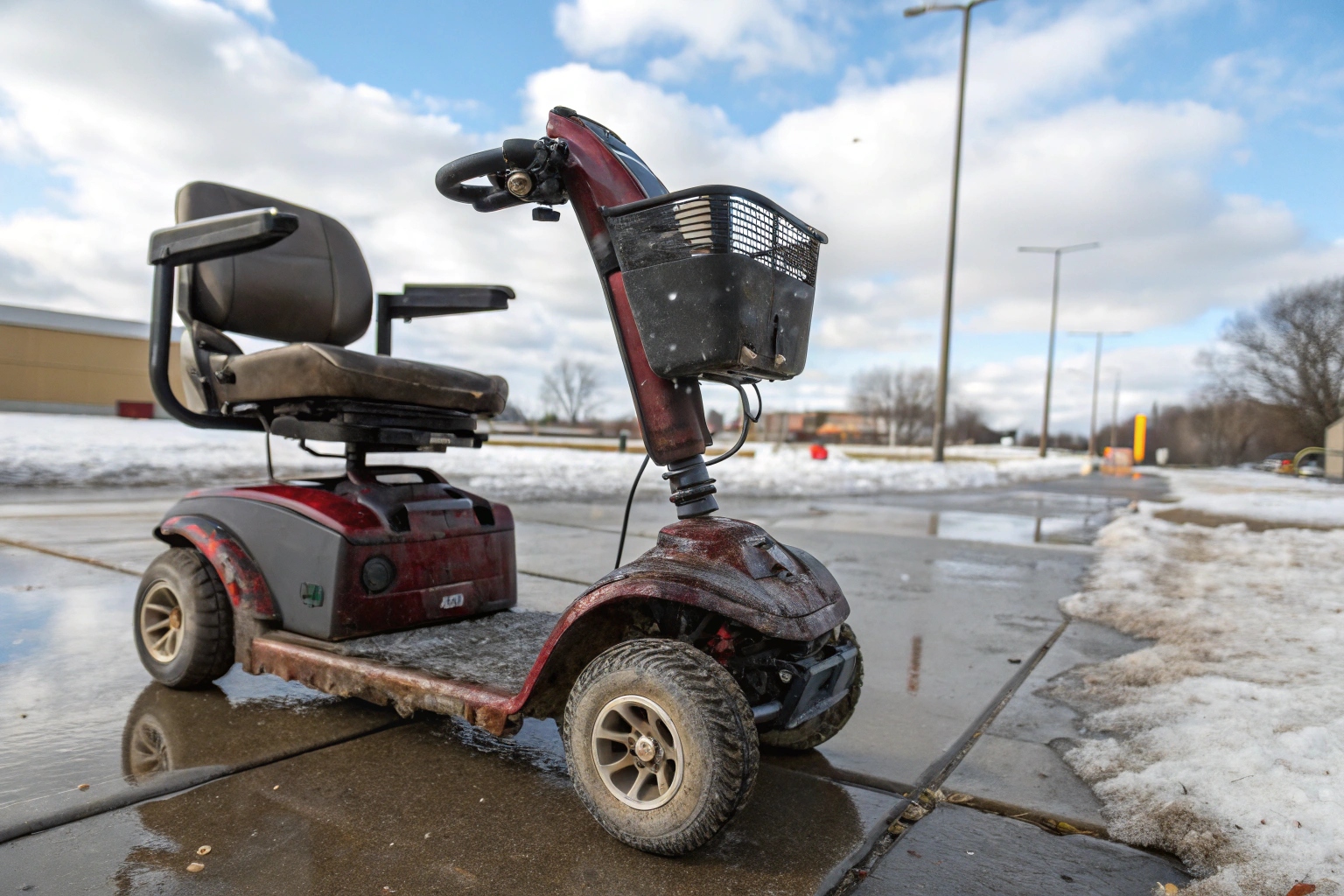
Fabrikamızdan dünyanın her yerine, akla gelebilecek her türlü iklime scooter gönderiyoruz. Geri gelen onarım raporlarını ve garanti taleplerini görüyoruz. Bir scooter'ın ömründeki en büyük faktör onun nasıl saklandığıdır. Doğa şartlarından korunan bir scooter yıllarca dayanabilirken, dışarıda bırakılan bir scooter hızla sorun çıkaracaktır. Müşterinize verebileceğiniz en iyi tavsiye basittir: Scooter'ınızı kullanmadığınız zamanlarda kapalı alanda veya koruyucu bir örtü altında tutun. Bunu yapmadıklarında tam olarak ne olacağını ayrıntılı olarak inceleyelim.
Ne düzeyde suya maruz kalma mobilite scooterına zarar verebilir?
Bir müşteri hafif bir sağanak yağışa yakalanır ve hiçbir şey düşünmez. Haftalar sonra scooter garip davranmaya başlar veya gizli korozyon nedeniyle tamamen çalışmayı durdurur.
Hafif yağmur bile sorun olabilir. Çoğu mobilite scooterı tamamen su geçirmez değildir. Yeke kontrol paneline ve elektrik konnektörlerine su sızarak kısa devrelere ve paslanmaya neden olabilir. Yalnızca IPX4 veya daha yüksek derecelendirmeye sahip modeller su sıçramalarına karşı dayanıklıdır.
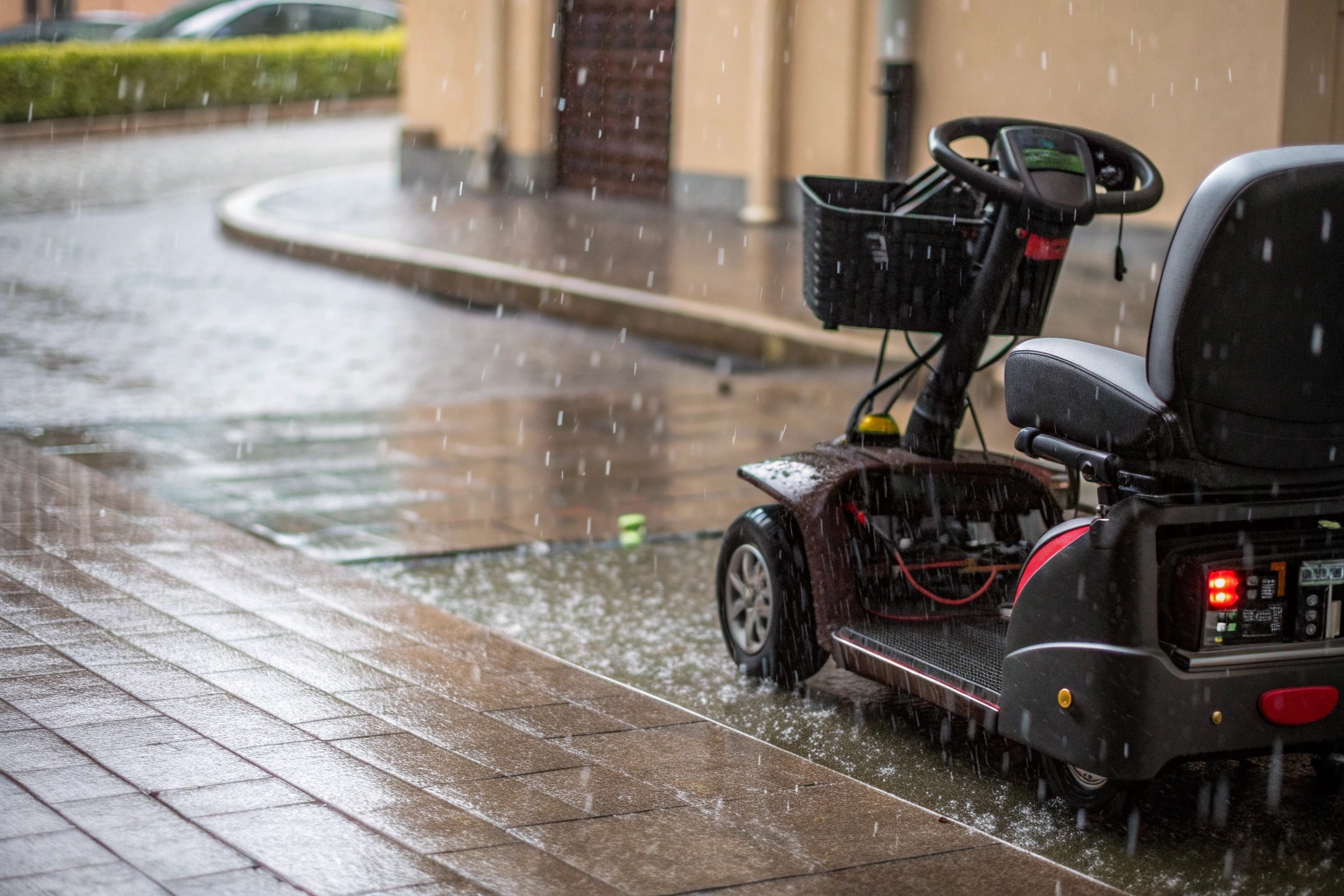
Bu en sık karşılaştığımız sorunlardan biri. İnsanlar açık havada kullanılmak üzere yapılmış bir aracın su geçirmez olduğunu varsayarlar ancak durum nadiren böyledir. En savunmasız alan gaz kelebeğinin, akü göstergesinin ve kontrollerin bulunduğu yekedir. Bu bileşenler elektroniktir ve neme karşı çok hassastır. biz açıklıyoruz Giriş Koruması (IP) derecesi B2B ortaklarımıza müşterilerinin beklentilerini yönetebilmeleri için. Daha yüksek bir derecelendirme daha iyi koruma anlamına gelir, ancak çoğu standart scooterın derecelendirmesi düşüktür veya hiç yoktur. Scooter ıslanırsa tavsiye basittir: Kontrol paneline ve şarj portuna özellikle dikkat ederek, hemen kuru bir bezle silin. Gizli nemin buharlaşmasına izin vermek için kuru bir yerde saklayın. Bu basit alışkanlık ileride çok pahalı bir onarımın yapılmasını önleyebilir.
Su Direncini Anlamak (IP Derecelendirmesi)
| Derecelendirme | Koruma Seviyesi | Gerçek Dünyanın Anlamı |
|---|---|---|
| Derecelendirme Yok | Koruma yok | Kuru tutulmalıdır. Tüm yağmurlardan kaçının. |
| IPX4 | Sıçramaya dayanıklı | Su birikintilerinden veya çok hafif yağmurdan kaynaklanan hafif sıçramalarla başa çıkabilir. |
| IPX7 | Suya dayanıklı | Suya batırılabilir (scooter'lar için nadirdir). |
Doğrudan güneş ışığı ve yüksek sıcaklık mobilite scooterı bileşenlerini nasıl etkiler?
Bir müşteri her gün scooterını sıcak güneşin altında park halinde bırakıyor. Bir yaz sonunda pil ömrü yarı yarıya azalıyor ve plastik gövde solmuş ve çatlamış görünüyor.
Doğrudan güneş ve yüksek ısı, scooter'ın içini ve dışını bozan güçlü bir kombinasyondur. UV ışınları plastiğe ve lastiklere zarar verirken, yüksek sıcaklıklar da pilin şarj tutma özelliğini kalıcı olarak yok ederek ömrünü kısaltır.
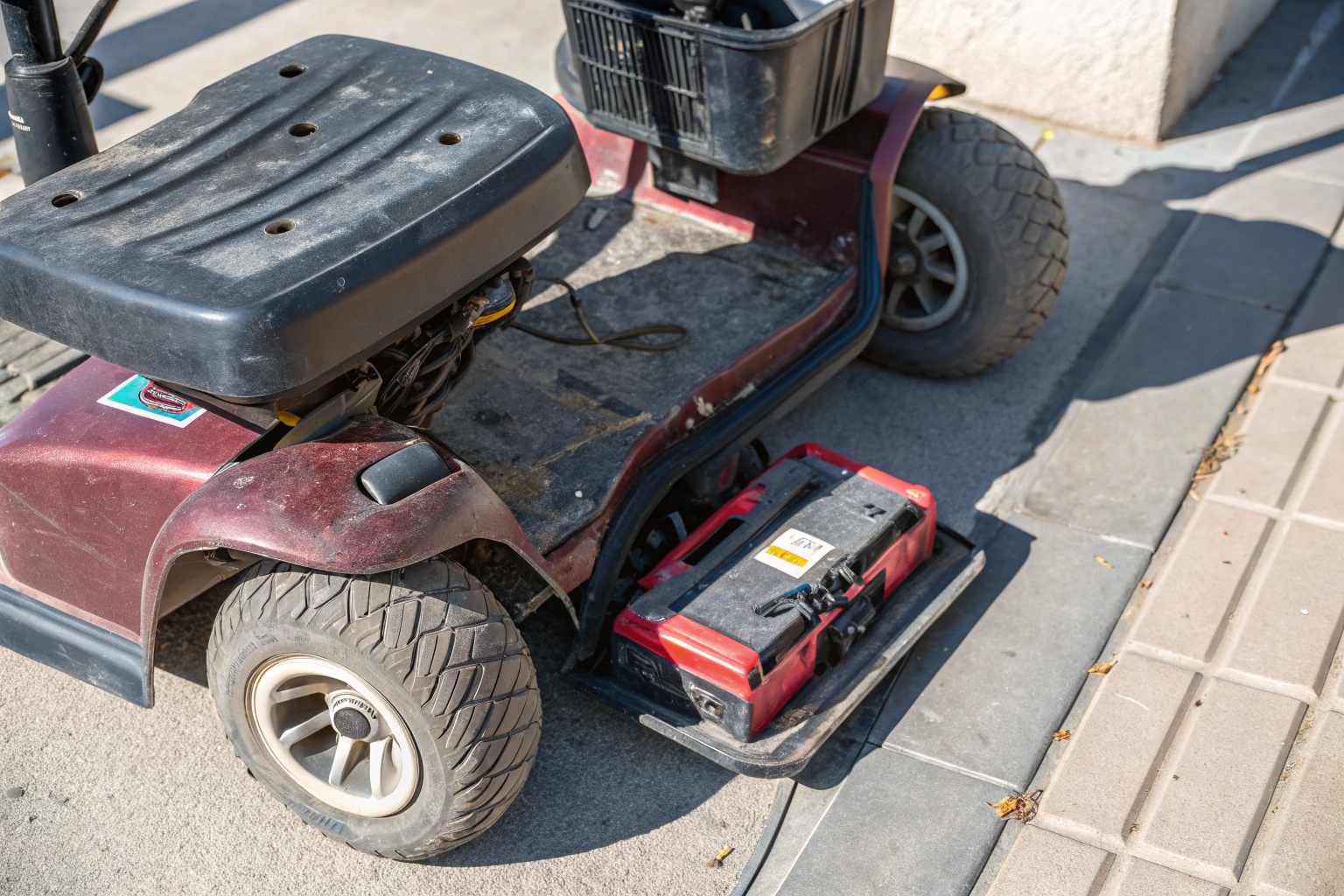
Tropikal veya çöl iklimlerinde kullanılan scooterlarda bunu sıklıkla görüyoruz. Hasar iki şekilde olur. İlk olarak güneşten gelen ultraviyole (UV) radyasyon scooterın dış kısmına saldırır. Plastiğin kimyasal bağlarını parçalayarak kırılgan ve çatlamaya yatkın hale getirir. Ayrıca boyanın solmasına ve lastiklerdeki kauçuğun bozulmasına neden olur. İkincisi ve daha da önemlisi ısı pili öldürür. A lityum pili Sürekli olarak 45°C'de saklanan veya kullanılan bir ürün, 25°C'de saklanan bir ürüne kıyasla kapasitesini iki kat daha hızlı kaybedebilir. Bu hasar kalıcıdır. Bunu önlemenin en kolay yolu gölgeye park etmektir. Gölge yoksa basit, yansıtıcı bir scooter kullanın kapak yapar çok büyük bir fark. Ayrıca kullanıcılarınıza, uzun bir yolculuktan sonra dokunulamayacak kadar sıcak olan pilleri asla şarj etmemelerini tavsiye edin. Önce soğumasını bekleyin.
Soğuk ve dondurucu koşullar mobilite scooterının performansını olumsuz etkileyebilir mi?
Kışın ilk soğuk gününde müşteriniz sizi arıyor, scooterının bozulduğundan endişeleniyor çünkü menzili bir anda 0 düşüyor ve kendini yavaş ve zayıf hissediyor.
Evet, soğuk hava pil performansını önemli ölçüde azaltır. Kalıcı bir hasara neden olmasa da, donma sıcaklıkları bir scooterın menzilini geçici olarak -30'a kadar azaltabilir ve gaz tepkisinin yavaşlamasına neden olabilir. Pil ısındığında gücü geri gelecektir.
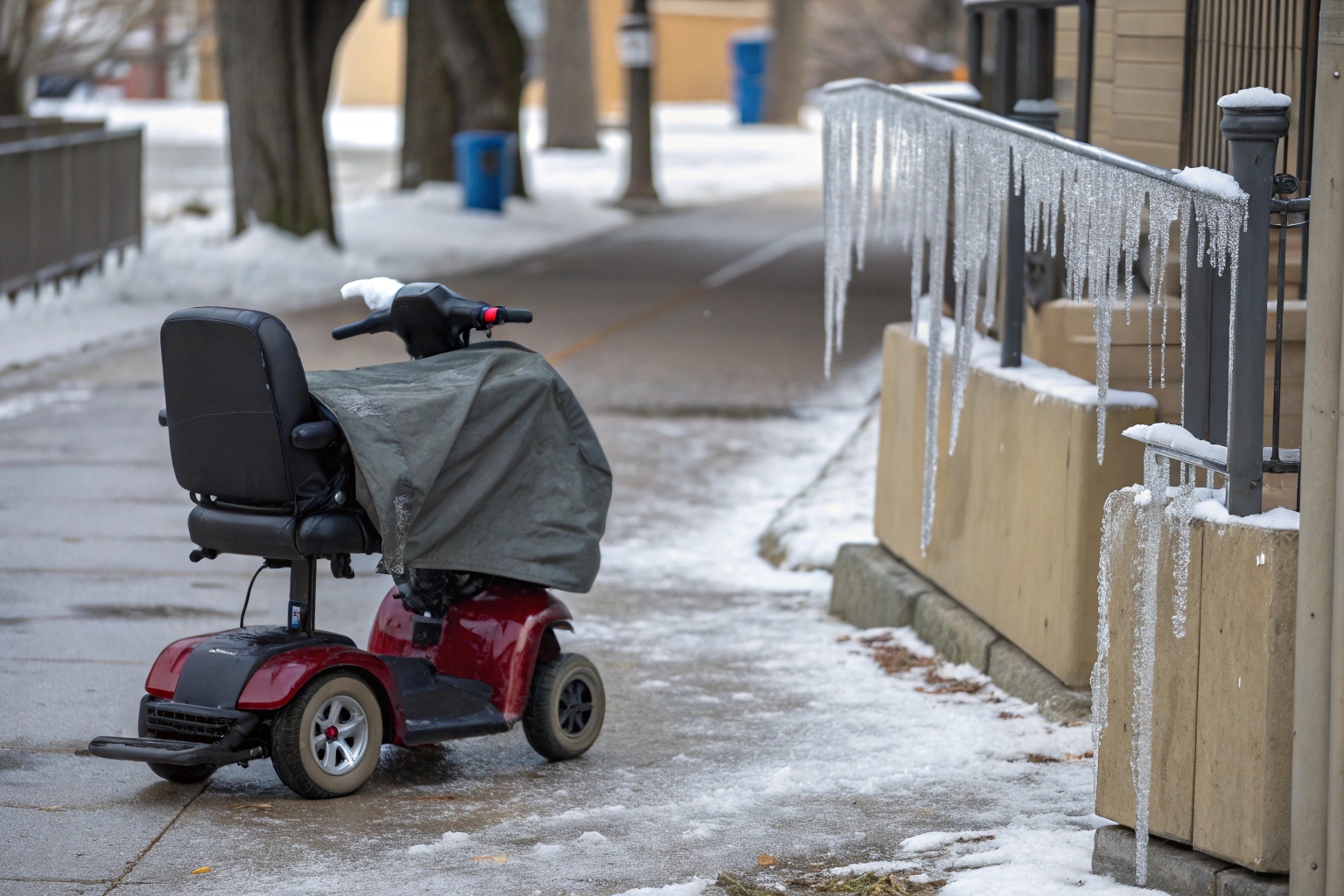
Bu bir kimya sorunudur, bir kusur değil. Pilin içindeki kimyasal reaksiyonlar Soğukta elektrik üreten sistemler önemli ölçüde yavaşlıyor. Gereksiz paniği ve servis çağrılarını önlemek için soğuk bölgelerdeki müşterilere bunu açıklamak önemlidir. Etki geçicidir. Bunu dondurucu bir sabah koşmaya çalışan bir insan gibi düşünün; çok daha yavaş hareket ederler. Bunu yönetmenin en iyi yolu, scooter'ı garaj veya evin içi gibi daha sıcak bir yerde saklamaktır. Pil çıkarılabilirse, gece boyunca yalnızca pili içeri sokmak ertesi günkü performansında büyük fark yaratacaktır. Müşteriler ayrıca kışın daha kısa yolculuklar planlamalı ve menzil ölçerin yaza göre daha hızlı düşeceğini anlamalıdır. Scooter'ı kırmıyorlar; bu soğukta pillerin doğasıdır.
Kar ve buz koşullarının scooter mekaniği üzerindeki etkisi nedir?
Bir kullanıcı scooterını karlı bir yolda zorlayarak geçiyor. Daha sonra frenlerin düzgün çalışmadığını fark ederler ve tekerleklerden ve motordan sürtünme sesleri duyarlar.
Kar ve buz doğrudan mekanik hasara neden olur. Yoğun kar, frenleri ve aktarma organlarını sıkıştırabilir. Daha da önemlisi, buzu eritmek için kullanılan aşındırıcı yol tuzu, scooterın çerçevesini, tekerlek yataklarını ve elektrik bağlantılarını hızla paslandırarak büyük arızalara yol açabilir.
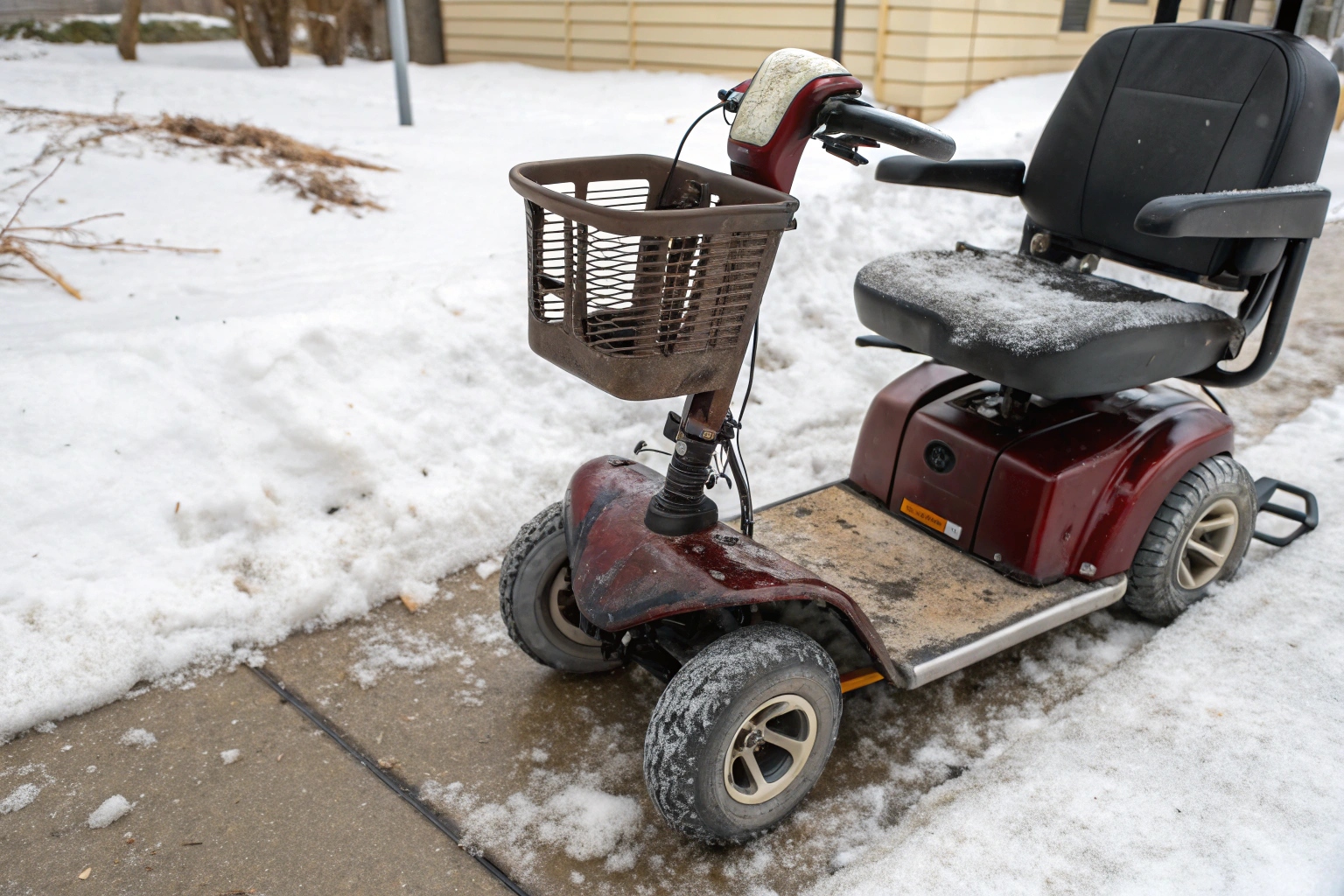
Soğuk aküyü etkilerken, kar ve buz da scooterın fiziksel yapısına zarar veriyor. Hareketlilik scooterları kar motosikletleri değildir. Küçük tekerlekleri ve yerden yüksekliği derin kar için tasarlanmamıştır. Tekerlek yuvalarına ve motorun çevresine kar sıkıştığında hareketli parçalara engel olabilir. Eriyip tekrar dondukça frenleri tutabilir veya contalara zarar verebilir. Ancak en büyük tehdit yol tuzudur. İnanılmaz derecede aşındırıcıdır. Bir müşteri arıtılmış sulu çamurun içinden geçerse, tuz spreyi scooterın alt takımının her yerine bulaşır. Kullanıcıların bu koşullarda sürüş yaptıktan sonra scooterlarının altını tatlı suyla durulayıp iyice kurutmalarını şiddetle tavsiye ederiz. Karlı bölgelerdeki distribütörlerimiz için, scooter'a ekstra bir koruma katmanı sağlamak amacıyla kışa hazırlık hizmetleri ve yeke kılıfları ve motor koruyucuları gibi aksesuarlar sunmanızı öneririz.
Çözüm
Dış mekan unsurları mobilite scooterının en büyük düşmanıdır. Uzun bir hizmet ömrü sağlamanın en iyi yolu, aracı aşırı sıcaklıklardan uzak, kuru ve korunaklı bir yerde saklamaktır.

